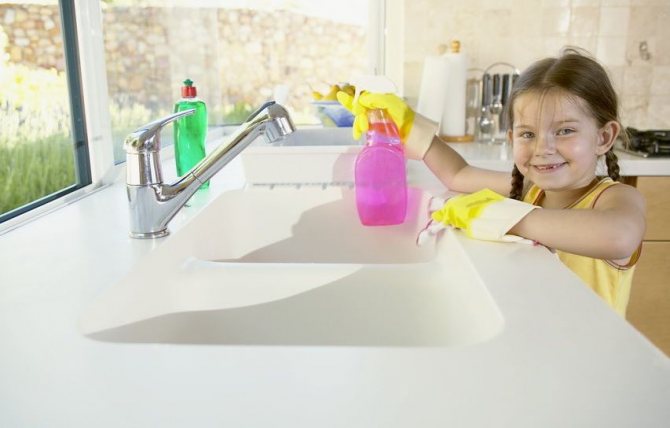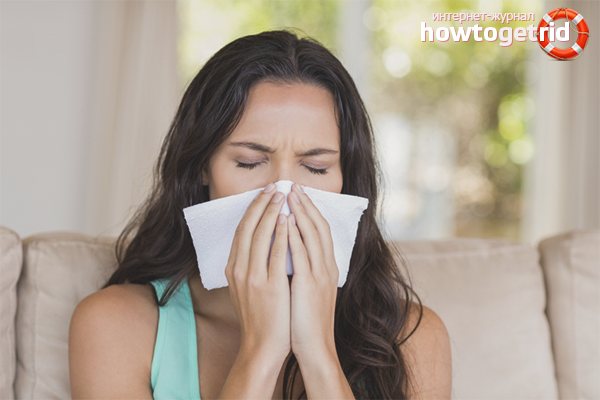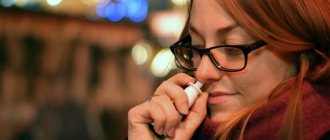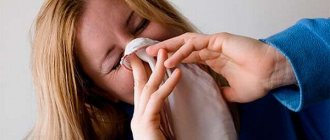Dermatitis, conjunctivitis, allergic rhinitis, bronchial asthma are such different diseases with different manifestations, but they have so much in common. They are united by the increasing number of cases each year and the allergic nature. Entire families often suffer from allergic diseases, and people do not know what they might be allergic to in their apartment. Allergens await us not only at the doorstep, but also right at home. In this material we will look at the ten most common irritants, what the reaction to each of them is, and what you can do to protect yourself and your loved ones.
This list should always be in the mind of every allergy sufferer. By knowing the enemy by sight, you can minimize the likelihood of a negative reaction. Various substances and factors can become irritants; they cause different forms of the disease; you can learn more about this from the article “What are allergies?”
Household dust
With regular cleaning we only reduce the amount of dust; it is impossible to get rid of it completely. In any home there are hard-to-reach places that cannot be cleaned daily; a lot of dust accumulates in any textiles, upholstered furniture, and toys.
Everyone in the house produces dust: people, pets and plants, insects, even bacteria.
The most common symptoms:
- sneezing and runny nose;
- conjunctivitis;
- dry cough;
- skin rashes, itching, eczema.
The disease worsens in autumn and winter, since during these seasons we spend a lot of time at home. According to WHO statistics, about 40% of the world's population react to dust, the peak occurs in August-October. The most dangerous consequence is bronchial asthma. It is recommended to get rid of places where dust accumulates: throw away everything unnecessary, replace upholstered furniture with leather, heavy bedspreads with easily washable ones.
Allergen-specific IgE – allergen panels
The diagnosis of an allergic disease is made on the basis of a comprehensive examination of the patient.
Decoding the analysis results
After conducting an allergen test in the network of our clinics, you will be able to see the test results in your personal account on the website and receive them by email (Don’t forget to consent to sending you letters and receive a login and password for your personal account at the reception of any of the clinics). To have an idea of what the research showed, we present the decoding methodology.
Attention! If a disease is detected, do not self-medicate; consult a specialist.
| Concentration of specific IgE, IU/ml | Class | Interpretation of the result |
| < 0,5 | 0 | Missing or undeterminable |
| 0,51-1,0 | 1 | Low, often without clinical manifestations |
| 1,1-5,0 | 2 | Average, slightly positive |
| 5,1-25,0 | 3 | High, with pronounced clinical manifestations |
| 25,1-75,0 | 4 | Very high, with pronounced clinical manifestations |
| > 75,0 | 5 | Exceptionally high, with pronounced clinical manifestations |
Allergy panel “Food allergens”
An important task of allergy diagnostics is to establish the etiological factor in the development of the allergic process, in other words, which allergen causes allergy symptoms. Determining the level of specific IgE antibodies in the blood makes it possible to identify exactly the pathological agent for the patient.
Food allergy conditions include various skin manifestations (urticaria, Quincke's edema, atopic dermatitis), gastrointestinal lesions (nausea, vomiting, diarrhea, etc.), attacks of bronchial asthma and anaphylactic reactions. The prevalence of food allergies is 0.3-7.5%, more common in children than adults. More than 90% of all food allergies are caused by 8 foods: eggs, peanuts, milk, soy, tree nuts, fish and crustaceans, and wheat.
It is recommended to donate blood in the morning (between 8 and 11 o’clock), on an empty stomach (at least 8 and no more than 12 hours of fasting, you can drink water). Avoid food overload the day before. Discontinuation of antihistamines is not required.
Allergy panel “Household allergens”
An important task of allergy diagnostics is to establish the etiological factor in the development of the allergic process, in other words, which allergen causes allergy symptoms. Determining the level of specific IgE antibodies in the blood makes it possible to identify exactly the pathological agent for the patient.
Household allergens are house dust mites - Dermatophagoides pteronyssinusu Dermatophagoides farinae. Their peak concentration occurs from September to November. Found in mattresses, feather pillows, bed linen, upholstered furniture and carpets. The allergen is mainly found in the body and feces of the tick.
It is recommended to donate blood in the morning (between 8 and 11 o’clock), on an empty stomach (at least 8 and no more than 12 hours of fasting, you can drink water). Avoid food overload the day before. Discontinuation of antihistamines is not required.
Epidermal allergens
An important task of allergy diagnostics is to establish the etiological factor in the development of the allergic process, in other words, which allergen causes allergy symptoms. Determining the level of specific IgE antibodies in the blood makes it possible to identify exactly the pathological agent for the patient. Animal allergens include dander, fur, saliva, urine, and feathers from animals and birds. They are part of house dust and are airborne, causing respiratory symptoms. Epidermal antigens are very active, and even short-term contact with them can provoke a violent allergic response.
It is recommended to donate blood in the morning (between 8 and 11 o’clock), on an empty stomach (at least 8 and no more than 12 hours of fasting, you can drink water). Avoid food overload the day before. Discontinuation of antihistamines is not required.
Pollen allergens
An important task of allergy diagnostics is to establish the etiological factor in the development of the allergic process, in other words, which allergen causes allergy symptoms. Determining the level of specific IgE antibodies in the blood makes it possible to identify exactly the pathological agent for the patient.
Most often, contact with pollen from wind-pollinated plants leads to the development of an allergic reaction. Their pollen is volatile and during the flowering of such plants accumulates in the air in quantities sufficient to create a certain high concentration. There are mainly 3 groups of allergenic plants: deciduous trees, cereal grasses and weeds. Allergies to plant pollen develop only during the flowering period. The maximum concentration of pollen in the air occurs in the early morning hours and before 12 noon.
It is recommended to donate blood in the morning (between 8 and 11 o’clock), on an empty stomach (at least 8 and no more than 12 hours of fasting, you can drink water). Avoid food overload the day before. Discontinuation of antihistamines is not required.
Fungal allergens
An important task of allergy diagnostics is to establish the etiological factor in the development of the allergic process, in other words, which allergen causes allergy symptoms. Determining the level of specific IgE antibodies in the blood makes it possible to identify exactly the pathological agent for the patient.
Fungal microorganisms live both indoors and are a component of house dust and in the external environment. In residential areas there are especially many of them in furniture upholstery, air humidifiers, bathrooms, food waste containers, garbage chutes, and damp basements.
Exacerbation of atopic dermatitis with an allergic reaction to fungi is usually observed in the autumn-winter period, and sometimes all year round. In the external environment, fungi are ubiquitous. They can be found in air, soil, fresh and salt water. Exacerbation of allergic diseases in children can be caused by a walk in the forest or a trip to the farm, harvesting hay or grain, collecting fallen leaves, especially in humid, warm summer and autumn after leaf fall. Some patients with fungal allergies cannot tolerate antibiotics from the penicillin group, which have common allergenic properties.
It is recommended to donate blood in the morning (between 8 and 11 o’clock), on an empty stomach (at least 8 and no more than 12 hours of fasting, you can drink water). Avoid food overload the day before. Discontinuation of antihistamines is not required.
Individual allergens
A protective response is necessary to ensure the body's defense upon initial contact with pathogens, as well as to immunize it upon repeated contact. All allergic reactions are preceded by an asymptomatic phase of initial contact, during which specific immunoglobulins E (IgE antibodies) are formed. Upon repeated exposure to the triggering allergens, these IgE antibodies react with the allergens and lead to the release of mediators (primarily from mast cells) such as histamine, leukotrienes, prostaglandins, etc., which lead to the development of allergy symptoms. When an allergic reaction occurs, the allergens that caused it can be determined by determining specific IgE antibodies in the blood serum.
The laboratory performs a wide range of tests to determine specific IgE antibodies to various allergens. The concentration of IgE antibodies is expressed quantitatively, and the class of pathological manifestation of allergic symptoms is also determined.
It is recommended to donate blood in the morning (between 8 and 11 o’clock) on an empty stomach (at least 8 and no more than 12 hours of fasting, you can drink water). Avoid food overload the day before. Discontinuation of antihistamines is not required.
Allergen-specific IgE (quantitative result + photo printout of the result)
An important task of allergy diagnostics is to establish the etiological factor in the development of the allergic process, in other words, which allergen causes allergy symptoms. Determining the level of specific IgE antibodies in the blood makes it possible to identify exactly the pathological agent for the patient.
This test is based on the principle of immunoblotting. Specific allergens corresponding to the composition of the panel are applied to the surface of nitrocellulose membranes. The degree of response of allergens present in the blood is assessed by the intensity of coloring of the corresponding bands, the quantitative assessment of which is expressed in the corresponding IU/ml units and classes. There is built-in quality control of the study. The result is presented in three displays: - photograph of the strip; — study histogram; — table of results (list of allergens, IU/ml, classes of allergenicity, assessment of the significance of the results). It is recommended to donate blood in the morning (between 8 and 11 o’clock), on an empty stomach (at least 8 and no more than 12 hours of fasting, you can drink water). Avoid food overload the day before. Cancellation of antihistamines is not required.
Mold
Mold may not be visible, but it is present in almost every home. It is localized in the bathroom and toilet, on wooden furniture, in books and soft toys. There are about two dozen species, and all of them are allergens. Symptoms of an allergy to mold in the apartment:
- difficulty breathing, shortness of breath;
- runny nose, itchy nose;
- hives;
- swelling of the oral cavity;
- abdominal pain, nausea, sometimes with vomiting;
- exacerbation in asthmatics.
Molds grow in conditions of high humidity, so you need to try to ensure that there are no such places at home. It wouldn’t hurt to purchase a device that measures humidity; it should be between 40 and 60%.
Fighting allergies
If an allergy does appear, then you can buy remedies for house dust allergens at any pharmacy. This is, of course, an extreme method, because you can get rid of allergies in other ways:
Firstly, for people sensitive to such things, lay parquet or laminate on the floors of apartments. These are unfavorable conditions for the development of fungi. Minimize the presence of carpets on floors. It is better to replace them with laminate or parquet.
Secondly, people sensitive to dust should not keep stacks of books in cabinets and shelves; it is better to get rid of this source of allergy. A lot of dust, and as a result, allergies are caused by fabric children's or soft toys, which accumulate a lot of dust over time. For upholstered furniture, give preference to leather furniture as a texture; it absorbs less dust.
Pets
Unfortunately, they bring not only joy, but also allergens. The human body reacts to proteins present in saliva, dander, and urine of animals. Contrary to popular belief, allergies are caused not by wool, but by squirrels. Therefore, it does not matter whether the pet has fur or how long it is. Usually manifests itself in a dry cough, sneezing, skin rashes, and tears flowing from the eyes. According to statistics, allergy sufferers who own cats have it the worst of all. If you are prone to allergic diseases, it is better not to have animals, but if you already have them, take precautions: limit their habitat, do not spend time with them in a confined space, ventilate and clean them more often.
Latex
Present in many household items: rugs, rubber toys, interior items and clothing, even chewing gum. Symptoms may include nasal congestion, redness of the skin, watery eyes, red eyes. In some cases, the pulse increases, a feeling of suffocation occurs, the face, neck and genitals swell, and blood pressure may drop significantly, even to the point of lightheadedness and fainting. To get rid of the manifestation, you can only do one thing: protect yourself from contact with latex.
Cockroaches
If you live in an old house, then there is a risk of unpleasant pests suddenly appearing. You can bring cockroaches home in your bag. These insects can cause allergies through direct contact or through inhalation of their waste products. Accidentally swallowing a cockroach can lead to an infectious disease or parasitic infestation. These insects are carriers of harmful bacteria and worm eggs.
Getting rid of parasites is not easy. First, cut off their access to food. Wash dishes immediately after eating and remove leftover food and crumbs from the house. Cover the ventilation holes with mesh and seal the cracks. Buy special anti-cockroach products (traps, boric acid, etc.). Place the poison in several places at once, repeatedly until the insects disappear completely.
Insects
Many people know how an allergy to mold in an apartment or to pets manifests itself. But few people know that insects can also act as an allergen. The reaction occurs not only to the direct bite, but also to the waste products of insects. In some cases, people suffer from allergic reactions for years and do not even realize that the cause is mites or cockroaches, which they have never seen. The most common manifestations are sneezing and coughing. If there is even the slightest suspicion of the presence of insects, then it is worth ordering pest control. When relaxing in nature, it is necessary to use repellents; you should not use sweet perfumes and body products before leaving for a potentially dangerous place; they attract insects.
Allergy diagnostics using the ImmunoCap method
Determining the level of specific IgE antibodies in the blood makes it possible to identify exactly the pathological agent for the patient. Currently, the ImmunoCAP technology is used, recognized by the World Health Organization as the “gold standard” in in vitro allergy diagnostics. Advantages of this method: it can be used without restrictions – regardless of the patient’s age, skin condition, drug treatment, or disease activity. Performing this analysis is safe for the patient compared to skin tests (in vivo), as it eliminates contact with the allergen. Taking antihistamines and age characteristics do not affect the quality and accuracy of the study.
It is recommended to donate blood in the morning (between 8 and 11 o’clock), on an empty stomach (at least 8 and no more than 12 hours of fasting, you can drink water). Avoid food overload the day before. Discontinuation of antihistamines is not required.
Thus, the determination of specific IgE antibodies in the blood by the ImmunoCAP method can be used in various cases, from initial allergy diagnostics to situations related to polysensitization and selection of patients for allergen-specific immunotherapy (ASIT).
In cases where the nature of the symptoms is unclear, when it is necessary to confirm or exclude an allergy, it is recommended to carry out the Fadiatop and Fadiatop children tests at the initial stage of diagnosis. They will help identify patients for whom specific IgE testing will detect the allergens that trigger their symptoms.
paints and varnishes
You can meet them not only during repairs. Lead, mercury, cadmium compounds, chlorinated phenols and other aggressive components present in the paint and varnish industry are also found in printing products, textiles and even cosmetics. An allergic person reacts to contact with dizziness, the eyes begin to itch and burn, tears flow from them, the skin turns red, sometimes begins to peel, a cough begins, and a feeling of suffocation appears. If the reaction occurs, it can lead to anaphylactic shock and convulsions. You should be careful when handling nail and hair polishes, and carry out repair work only with a respirator and in a well-ventilated room.
Houseplants
No less dangerous than pets, and it’s not just about flowering. Plants are living organisms that carry out their life activities by releasing essential oils, alkaloids, enzymes and other potentially dangerous substances. Dust collects in pots filled with soil, and mold often forms. Allergens are also found in fertilizers and nutrient mixtures. All this together causes sneezing and coughing, nasal congestion and bronchospasms.
The most undesirable plants for an allergy sufferer are geranium, fern, hydrangea, cyclamen, dracaena, rhododendron, primrose, Kalanchoe, croton, and they are all very common. You should not place flower pots in the bedroom; once a week it is recommended to wipe the leaves with a damp cloth. When it comes to fertilizers, you should choose liquid mineral ones; they penetrate the soil faster and are absorbed by the roots.
Air conditioner
Not everyone knows whether there is an allergy to air conditioning in an apartment, even those who suffer from it. It can be both a friend and an enemy to an allergic person. When reacting to dust and pollen from house plants, the air conditioner will help by trapping particles on its filters. It will also be useful in reactions to overheating. How this happens is described in the article “What is heat allergy and how to treat it?”
But if you do not maintain and clean the air conditioner on time, then its use will be harmful. With the flow of air, dirt and toxic substances will spread throughout the room. Industrial climate control systems that use water can be dangerous. Microorganisms develop in this water, in particular bacteria called legionella. Fortunately, household and car air conditioners do not use water, and they cannot cause the development of legionellosis.
Now you know what you might be allergic to in your apartment and how to protect yourself from unwanted exposure. Only if the listed rules are observed, the house becomes the safest place.
In what places in the apartment are the most dangerous allergens hidden?
The most important thing in treating allergies is getting rid of the main pathogen, in our case, dust. It can accumulate anywhere. To reduce allergy symptoms, you need to do some spring cleaning.
- Clean the apartment of any dust. It can accumulate in curtains and drapes, in bookcases, on carpets, in pillows and soft toys. If possible, get rid of carpeting and toys - they serve as excellent dust accumulators. All textiles must be washed thoroughly at high degrees.
- Be sure to use professional exterminator services to get rid of ticks - it is very difficult, almost impossible, to remove them yourself.
- Rinse all hard surfaces thoroughly. By the way, wet cleaning should be done daily.
- Change pillows and blankets once a year, and the mattress once every 3-4 years. After all, one gram of mattress dust can contain thousands of mites.
- Be sure to install humidifiers and air purifiers - they will help get rid of flying dust in the air.
- Swap your regular vacuum cleaner for a washable model. The fact is that the vacuum cleaner only sucks in large particles of dust and debris, and, on the contrary, throws small ones into the air, spreading them throughout the apartment. But water vacuum cleaners perfectly collect even the smallest dust, while simultaneously doing wet cleaning.
- Change bed linen at least once a week and wash it at high temperature. In winter, move pillows and blankets outside to kill possible ticks with frost. On sunny days in summer, leave the pillows in direct sunlight. Bed linen must be ironed before use.
- Choose synthetic fillings for pillows and duvets that won't feed mites like feathers or down.
- Clean the air conditioner cartridges in a timely manner and invite a professional for preventive cleaning.
- If you have dried flowers at home, you should also get rid of them. It is better to keep books in plastic containers that can be wiped clean from dust.
These are simple but irreplaceable rules that will help you reduce the likelihood of exposure to an allergen on the human body. But what to do if the allergic reaction is in full swing? How to help a patient?
how to keep your apartment clean and tidy
You can use your social media account
You have been automatically redirected to the mobile version.
May 31, 2020, 06:26
Good afternoon everyone!
I came across the following situation: last October I moved into an apartment with my boyfriend; before that he was renting it out. The repairs are still left from the developer. In winter, after an acute respiratory infection, a lingering runny nose began - it was cured, the ENT said that it looked like an allergy.
For six months I have had a regular runny nose in the mornings, but a month ago it started getting worse. In the room where we sleep, our eyes and nose constantly itch and hurt, and we have a constant dry cough. In the morning there is swelling under the eyes and the eyes are red. Strange rashes began to appear on the face. The body itches periodically.
It's much easier outside the home. At home I washed all the floors, cabinets, changed the pillow, blanket, there is no dust at all on the floor and furniture surfaces, but in daylight you can see that there are a lot of dust particles and some fibers flying around the room. We ventilate regularly.
The furniture in the room is partly old (USSR times) and was brought in for the tenants. The wallpaper is the simplest paper from the developer (8 years old). There is linoleum on the floor also from the developer.
I’m going to see an allergist this week, but I understand that I need to look for the cause, since antihistamines are not a solution.
I feel better in the kitchen in the same apartment, after work I’m already afraid to go into the room; after 15 minutes my eyes start to itch. I sit in the kitchen until late. What to do? Please advise how to reduce the amount of dust in the room? Or could it be an allergy to furniture?
May 31, 2020, 10:11 am

Maybe throw out this old stuff and at least put up some new wallpaper?
May 31, 2020, 10:41 am
yes, this would be the best option, in any case, this apartment needs cosmetic repairs. I suggested this option to my MCH, or at least put the cabinets on the balcony for now, and look at them in case
May 31, 2020, 10:51 am
It could be anything. I watched a lot of programs about what houses are built from, in one house something was connected with mercury, in another everyone died of cancer, in a third potted flowers withered, and so on.
May 31, 2020, 11:04 am
I really hope that everything is not so sad here, but before this I lived in brick houses - everything was fine, I never had any allergies, even during repairs and the presence of construction dust. And here it is. I blame the furniture, because the furniture is really old and it’s embarrassing that even with constant cleaning in the apartment, dust seems to come out of nowhere.
May 31, 2020, 11:11 am
It may not be the dust.
Remove wallpaper, clean walls. Look at the ceilings (if they are suspended, then the paragraph is complete; if not, then what kind of paint and putty are used). Windows - what kind and how were they installed? What's under the linoleum? What are the partitions in the apartment made of?
There is also the option of bugs that live in furniture. There may also be mites if there are carpets. Fungus on the walls. Humidity. Yes, a million options!
Find out what you are allergic to and look at home to find out what is wrong.
May 31, 2020, 11:31 am
I think there is mold in the apartment. repairs need to be done, author.
May 31, 2020, 11:33 am
Even a pillow can contain dust mites. Disinfect everything, throw away the old one or replace it. But in general, the situation is terrible.
8. tell me, doctor
Author, you need to get out of this apartment. This is not dust, there is some kind of allergen. For example, formaldehyde in linol or in a chipboard wardrobe. Or a poisonous Chinese blanket. The rest don't care, but you are more sensitive to this. Ideally, you need to get out, the apartment will eat you up.
9. tell me, doctor
May 31, 2020, 11:38 am
Even newfangled interior doors made of wood-look chipboard can emit formaldehyde, etc. So dust has nothing to do with it.
May 31, 2020, 11:41 am
don't you have a cat?
May 31, 2020, 11:44 am
Maybe they lived with the previous owners, and the wool remained in secluded places. unlikely to dust. there is no dust (there is enough of it everywhere), but an allergen that the dust carries
May 31, 2020, 11:46 am
I think the reason is in the furniture, it wouldn’t hurt to look under the linoleum either
May 31, 2020, 12:11 pm
don't you have a cat?
I don’t have a cat, before that my parents always lived with cats; there are no allergies. Among the animals in the house there are 2 turtles, but I lived with them before (3 years) in another apartment in the same room - no problems. Here they are standing in another room with the door closed, which I don’t often go into.
May 31, 2020, 12:14 pm
The doors are from the developer, I don’t think they installed anything expensive. By the way, my MCH also had a lingering cough 2 times in a year, barley popped up and his throat often bothers him
May 31, 2020, 12:20 pm
If the kitchen is better, then wallpaper and linoleum have nothing to do with it. Most likely there is some kind of mite in the old upholstered furniture. Is there a chair? Sofa? Bed? Maybe in the mattress. Try sleeping without a mattress, take it out into the kitchen and see the reaction.
May 31, 2020, 12:25 pm
It may not be the dust. Remove wallpaper, clean walls. Look at the ceilings (if they are suspended, then the paragraph is complete; if not, then what kind of paint and putty are used). Windows - what kind and how were they installed? What's under the linoleum? What are the partitions in the apartment made of? There is also the option of bugs that live in furniture. There may also be mites if there are carpets. Fungus on the walls. Humidity. Yes, a million options! Find out what you are allergic to and look at home to find out what is wrong.
The house itself is panel, the windows are plastic from the developer (they are blown out in winter, not very high quality), there are no carpets in the apartment, curtains are only in the room where we sleep, there is visually no fungus on the walls, it seems to me that there is not much humidity, on the contrary, when you enter the apartment it is stuffy and dry some kind
May 31, 2020, 12:34 pm
There is no mattress and there never was, there is an armchair in the room that is not very attractive, dusty - there are thoughts about it that something might be flying from it. It’s really better in the kitchen - the cough goes away, the eyes don’t itch. As soon as I enter the room, symptoms begin within 15 minutes. I’m already thinking about taking a folding bed and sleeping in the kitchen)))
May 31, 2020, 12:44 pm
What do you sleep on? On the couch? Take the chair into the kitchen and see what happens
May 31, 2020, 12:53 pm
yes, on the sofa. I'll grab it today and check it out!
May 31, 2020, 1:00 p.m.
Yes, be sure to remove old furniture (especially upholstered furniture) - most likely this is the reason. no feather pillows or down jackets?j
May 31, 2020, 1:12 pm
there is nothing like that, the down jackets are hidden in bags, the pillows and duvet are artificial, I wash the bed linen regularly and then iron it
May 31, 2020, 1:33 pm
I would also get rid of the sofa. If it is old and people renting an apartment slept on it, why do you need it. If you don’t have extra money, buy an inexpensive sofa for the first time.
May 31, 2020, 2:15 pm
The berry may be a reaction to the secretions of dust mites (they themselves do not bite, the allergy occurs to their poop))). They live everywhere, even in synthetic pillows, crawl in beds, sofas, pillows, on bed linen, curtains, on our body too (((. For example, there can be up to several thousand of them on the eyebrows! They eat skin scales, particles of hair. Fortunately, they are invisible, you need a microscope)))
There are plenty of them in your sofa. The question here is, if you personally are allergic to them, do a test. If there is, the only thing that can help is changing the sofa either to a sofa with a leather cover / there will be fewer of them /, or a bed with a new mattress, anti-dust covers for the mattress, pillows, blankets. Wash bed linen, pillows, blankets at 60 degrees.
But it is quite possible that you have a reaction to washing powder, cat. you wash bedding and clothes. Try changing it to another, for sensitive skin, put as little powder as possible, turn on an additional rinse.
May 31, 2020, 2:51 pm

I also have some kind of allergen at home. I sleep great when visiting and in hotels. Our apartment is new. I painted the walls myself, it turned out very beautiful. But I'm afraid that the new coatings and insulation are full of all sorts of chemicals. How to find out what you are allergic to, fz. I did a test: I tested it on dogs, birch and walnut trees. What to do next?
May 31, 2020, 4:52 pm
Start with the bedding. Now they paint it with such ohm!! Buy a good set or two, look at Ikea. And don’t take it with very bright colors
May 31, 2020, 4:53 pm
And if only one family member has allergies, he needs to take allergy tests.
May 31, 2020, 7:47 pm
That's the last thing to go to Ikea.
May 31, 2020, 8:46 pm










